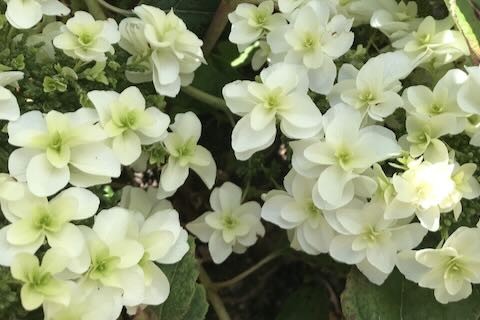
Lupinus 'Mixed Colours'
A mix of our lupin colour range, from white to reds, pinks, blues and purples.


Beautiful semi deciduous shrub with attractive textured multicoloured leaves and white flowers, likes good drainage and shade or dappled sun. Can often retain its leaves but benefits from an occasional light prune to promote basal growth.
Beautiful semi deciduous shrub with attractive textured multicoloured leaves and white flowers, likes good drainage and shade or dappled sun. Can often retain its leaves but benefits from an occasional light prune to promote basal growth.
Data sheet
A mix of our lupin colour range, from white to reds, pinks, blues and purples.
A recent release from our trial beds, begins as brighter musk pink then fades to soft pink then eventually cream, subtle and lovely and multicoloured tones as the flowers age. Easily cultivated like other yarrows in full sun.
A wonderful Geum kept in circulation by Dennis Norgate; vibrant tangerine orange, repeat flowers throughout the year and non seeding.
Richly coloured summer flowering achillea, begins as a deep burnt orange colour and will fade to a soft ochre.
Lovely variety with flower spikes in peach and apricot tones, like the colours of old fashioned roses. Clumping habit and long flowering.
Tasmanian native flag iris, useful in combination with grasses and perennials. Lovely and abundant white flowers in spring, evergreen leaves and drought hardy.
Allium like plant with pink flowers and grassy foliage, tough and long lived, often used in cottage gardens and border plantings
A cold tolerant highbush variety with a long fruiting period, reputedly self fertile, however combining varieties improves pollination generally.
The best white persicaria we have tried, as with Taurus and others, these will flower in summer but good much and soil fertility will ensure their best performance. Waist high or fraction higher in moister conditions, basal foliage with drifts of vertical white spikes. We like to plant these in clumped groups of 5 or 9 at 25cm spacings for best effect.
Lavender mauve trumpets with lighter throats medium to larger growth suitable for mass planting or summer border. Cut back after flowering as with lavenders and salvias.
Pretty variety that begins soft yellow then fades as the flowers age. Prolific flowering during winter, liking drained soils and drying out a little in summer. Cut back fairly hard early summer to around 2/3 to half height to keep compact. Looks terrific in mass plantings like all the wallflowers.
Tall Phlox paniculata type, soft pink flowering in summer, best on fertile moisture retentive soil with astrantia, delphiniums and herbaceous perennials.
Remarkable shrubby poppy from California for well drained soils and sun, will grow to a large bushy plant a metre across with dozens of white poppy flowers in summer. It requires a decent amount of space where it can sucker up and expand, resents transplantation once established. Very tough and drought hardy once established.
Low growing bedding and border plant with blue flowers, lasts well in a vase and keeps producing if deadheaded.
A pretty variety we raised a few years ago from experimental crosses, with some creative contributions from our staff for the name. Good clumping habit and a subtle colour.
Terrific tall variety, white flowering. Basal foliage produces dozens of 2m flower spikes, superb summer flowering background, plant in heavier fertile soil, shorter in less ideal conditions.

Beautiful semi deciduous shrub with attractive textured multicoloured leaves and white flowers, likes good drainage and shade or dappled sun. Can often retain its leaves but benefits from an occasional light prune to promote basal growth.